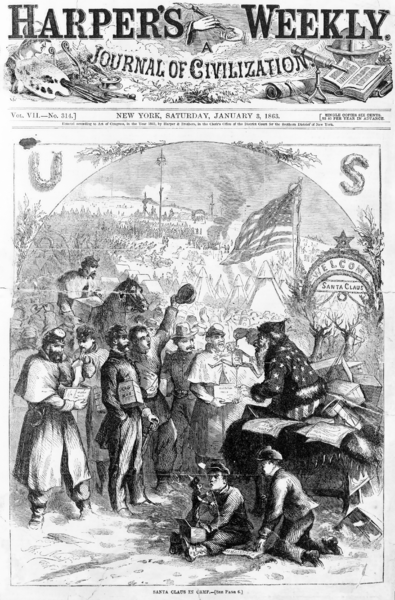ActiveHistory.ca is on a hiatus for the winter break, and will return to daily posts in early January. During the hiatus, we’re featuring some of our favourite holiday and winter themed posts. Thank you to all our contributors, guest editors, and readers for making 2018 a very successful year. Happy holidays to all and we look forward to continuing our work in 2019!
The following post by Christine McLaughlin was originally featured on December 21, 2009.
A flurry of criticism was directed at MP Scott Brison of Kings-Hants after he sent Christmas cards to his constituents featuring a photo of his family. Criticism stemed not from the fact that Canadian MPs are sending out Christmas cards in such a culturally diverse country. Instead, Brison has come under attack by a vocal group who judge his sexuality. It has been suggested that Brison’s cards were particularly inappropriate given that the cards were sent to mark a “Christian festival.”
The history of Christmas, however, shows that its roots in Christianity have always been tenuous; the holiday as it is celebrated in modern times is a product of an ever-deepening chasm between Christianity and Christmas. As Christianity has never solely defined seasonal celebrations, it is more appropriately marked by sending holiday, rather than Christmas, greetings.
December 21st marks the winter solstice in the northern hemisphere, the day when the sun makes its lowest and shortest appearance. Long before December 25 was chosen to commemorate the birth of Christ, many people across the world celebrated this event; hundreds of structures built thousands of years ago to line up with solar and lunar activity remain standing to this day . Examples of these include Newgrange in Ireland and Stonehengein England. As attempts to spread Christianity were made through the Roman Empire and beyond, pagan practices were often fused with Christian ones to make the latter more appealing.
Many of these pre-Christian customs have been surprisingly persistent. They include such activities as feasting, the worship and decoration of trees, decorating homes and altars with evergreen boughs, mistletoe and holly, and burning the Yule log, to name a few.

St. Nicholas, commonly known in English-speaking North America as Santa Claus, may have Christian roots. He was canonized for acts of charity, such as giving his inheritance to the poor and downtrodden. This is significantly different from contemporary times, where the poorest of children are lucky if they receive any gifts at all, regardless of whether they have been naughty or nice.
Santa Claus as he is now known is very much an invention of nineteenth-century America, and traditions carried with Dutch immigrants to the “New World” – he bears many similarities to the Germanic god Odin. Santa’s modern image was popularized in 1863 in Harper’s magazine; circulated in the midst of the Civil War, it features a pro-Unionist Santa stringing a “toy” before a group of soldiers. By the 1900s, Santa Claus and gift-giving grew increasingly synonymous with Christmas celebrations. Throughout the twentieth century, popular celebrations of Christmas changed considerably – particularly surrounding traditions of gift-giving – while Christmas emerged as a major pillar in an increasingly global economy.
This work is licensed under a Creative Commons Attribution-NoDerivatives 4.0 International License. Blog posts published before October 28, 2018 are licensed with a Creative Commons Attribution-NonCommercial-ShareAlike 2.5 Canada License.